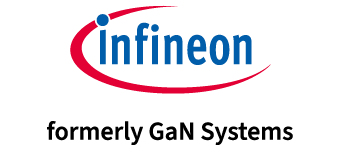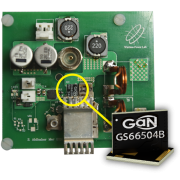AirFuel Alliance adds 氮化镓系统 (GaN Systems)
Above image: 250 W wireless charging device from the Imperial College London runs with 氮化镓系统 (GaN Systems)’ GaN transistors at 6.78 and 13.56 MHz.
氮化镓系统 (GaN Systems)’ enables high voltage, high power wireless charging
OTTAWA, Ontario, January 16, 2017 – 氮化镓系统 (GaN Systems), the industry-leading enabler of high voltage, high current, and high-frequency wireless charging, has joined the AirFuel Alliance, a global, nonprofit consortium of industry leaders responsible for developing wireless charging standards. 氮化镓系统 (GaN Systems) will aid the Alliance by bringing its wireless technology experience, by extending beyond the previously assumed limits of wireless charging, and by assisting the development of global wireless charging standards.

Wireless charging is growing at a compound annual growth rate in excess of 60%*. Until recently, this market has been dominated by low power (<15 W) applications achieved with silicon-based transistors. Contributing to this growth is the market demand for wireless charging systems which operate at power levels greater than 15 watts. 氮化镓系统 (GaN Systems)’ gallium nitride (GaN) transistors meet this demand by enabling efficient resonant wireless charging at power levels from 25 W to 2,500 W. These high power levels make it possible to rapidly charge multiple phones and tablets simultaneously, as well as larger devices such as laptops, power tools, robotics, drones and 2-wheelers.

In addition to enabling efficient higher power wireless charging, GaN transistors provide two major benefits: reducing system size 2-3 times, and reducing charging system cost.
氮化镓系统 (GaN Systems)’ VP of Strategic Marketing, Paul Wiener, will be active in the AirFuel Alliance. Mr. Wiener explained, “Today, 氮化镓系统 (GaN Systems) plays a critical leadership role by enabling high power wireless charging while reducing system size and cost. By joining the AirFuel Alliance, we will extend our role by contributing our technology, know-how, and perspective toward the evolution of resonant wireless charging standards.”
*Source: MarketsandMarkets.com
###



